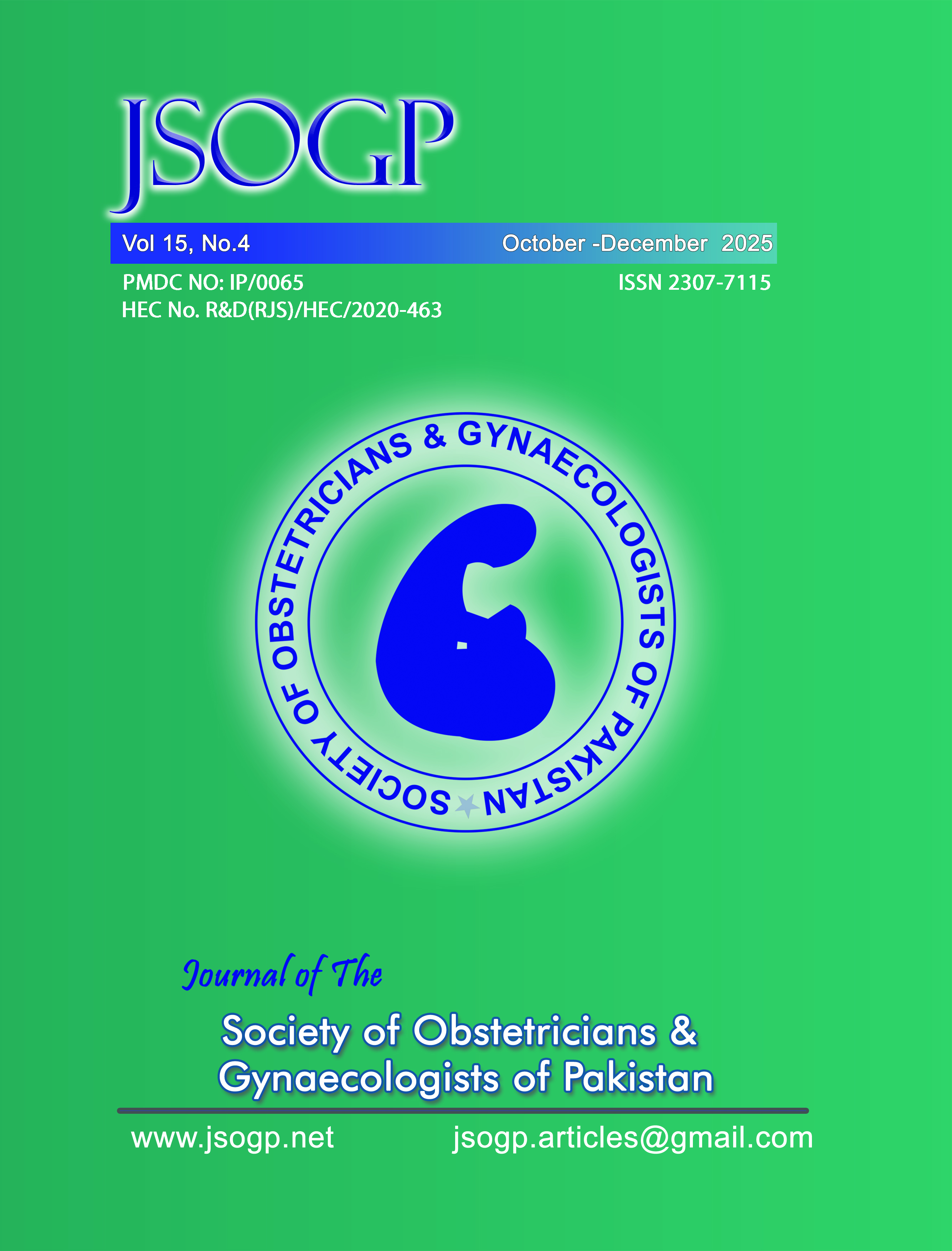Frequency of Structural and Hormonal Causes of Abnormal Uterine Bleeding (AUB) in Perimenopausal Women
Abstract
Objective: To evaluate the frequency of structural and hormonal causes of abnormal uterine bleeding (AUB) in perimenopausal women to support timely diagnosis, management, and prevention.
Methodology: This cross-sectional study was conducted in the Department of Obstetrics and Gynecology at Foundation University Islamabad, Fauji Foundation Hospital, from January to August 2024. It included all perimenopausal women aged 40–55 years presenting with AUB who had not yet attained menopause. A 5ml blood sample was collected from each case for laboratory investigations, including thyroid function tests (TSH and free T4), serum follicle-stimulating hormone (FSH), luteinizing hormone (LH), and prolactin levels, where clinically indicated, to assess hormonal abnormalities. Transvaginal ultrasonography (TVUS) was performed to evaluate the uterus, endometrium, and adnexal structures. Data were entered and analyzed using SPSS version 26.0.
Results: Leiomyoma 93(26.4%) was the most frequent abnormality, followed by cervical polyps (9.3%), endometrial hyperplasia without atypia (9.1%), adenomyosis (3.5%), endometrial polyps (3.2%), and malignant lesions including endometrioid carcinoma (0.3%) and cervical squamous cell carcinoma (0.3%). Hormonal and endometrial dysfunction-related abnormalities included disordered proliferative endometrium (24.6%) and chronic nonspecific endometritis (22.6%), with premalignant changes such as endometrial hyperplasia with atypia (0.8%). These findings varied significantly with age (p < 0.05).
Conclusion: Leiomyomas were the predominant structural pathology, while hormonal and endometrial abnormalities were also prevalent, especially in younger perimenopausal women.
Copyright (c) 2025 Journal of The Society of Obstetricians and Gynaecologists of Pakistan

This work is licensed under a Creative Commons Attribution-NonCommercial 4.0 International License.

